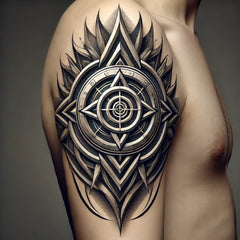Your cart is empty now.

Protecting fictional characters through Trademark and Copyright
Protecting fictional characters through Trademark and Copyright
Fictional characters are some of the most valuable creative assets in the entertainment industry. From Mickey Mouse to Harry Potter, well-developed characters can drive billion-dollar franchises across books, films, TV shows, video games and merchandise. As such, it's critical for content creators to understand how to protect their characters under intellectual property law. In the United States, the two most relevant forms of IP protection for fictional characters are copyright and trademark.
Copyright Protection for Fictional Characters
Copyright law protects original works of authorship fixed in a tangible medium of expression. 17 U.S.C. § 102(a). While fictional characters are not explicitly listed as a category of copyrightable subject matter, courts have long recognized that sufficiently distinctive characters are entitled to copyright protection. The seminal case on character copyrights is Nichols v. Universal Pictures Corp., where Judge Learned Hand articulated the now famous "sufficiently delineated" test: "the less developed the characters, the less they can be copyrighted; that is the penalty an author must bear for marking them too indistinctly."45 F.2d 119 (2d Cir. 1930). In other words, the more detailed and well-defined a character is, the more likely it is to qualify for copyright protection apart from the work in which it originally appeared. Courts have developed two main tests to determine if a character is sufficiently delineated for independent copyright protection:- The "Story Being Told" Test - Under this test, a character is only protected by copyright if it "constitutes the story being told" and is more than just a "chessman in the game of telling the story." Warner Bros. Pictures v. Columbia Broadcasting System, 216 F.2d 945 (9th Cir. 1954). Classic examples of characters that meet this high bar include James Bond, Sherlock Holmes, and Tarzan.
- The "Character Delineation" Test - This test looks at how extensively developed a character is in terms of physical appearance, personality traits, abilities, mannerisms, and other defining attributes. The more distinctive these elements are, the more likely the character is to warrant copyright protection. Anderson v. Stallone, 11 U.S.P.Q.2d 1161 (C.D. Cal. 1989).
Trademark Protection for Fictional Characters
In addition to copyright, fictional characters may be eligible for trademark protection if they serve to identify the source of goods or services. The key is that the character must function as a distinctive brand, not just as a creative work. Under the Lanham Act, a trademark can be "any word, name, symbol, or device" used to "identify and distinguish" one's goods or services from those of others. 15 U.S.C. § 1127. For a fictional character to serve as a trademark, consumers must associate it with a particular source, usually the company that created the character or licenses its use on merchandise. Some of the earliest character trademarks were comic strip characters like Buster Brown and Mutt & Jeff that were licensed for use on consumer products in the early 1900s. Today, it's common for popular characters to appear on everything from t-shirts to lunch boxes as a way to build brand awareness and generate additional revenue streams. To establish trademark rights in a fictional character, the owner must show that the character:- Is distinctive rather than generic
- Is used in commerce in connection with specific goods or services
- Serves to identify the source of those goods or services
Interaction Between Copyright and Trademark Protection
Many fictional characters are covered by both copyright and trademark, which can lead to some complex interactions between the two areas of law. In general, courts have held that trademark law cannot be used to extend the duration of copyright protection after a work enters the public domain. Dastar Corp. v. Twentieth Century Fox Film Corp., 539 U.S. 23 (2003). However, a character that achieves trademark significance can continue to enjoy trademark rights even after its copyright expires, as long as it continues to serve as a source identifier. The key is that the trademark covers only the character's use as a mark in commerce, not as a creative work. So while others may be free to copy the character from an artistic standpoint once the copyright lapses, unauthorized use of the character as a brand could still constitute trademark infringement. Another issue is whether trademark law can restrict expressive uses of a character that would otherwise be permissible under copyright's fair use doctrine, like parodies or commentary. Courts have reached differing conclusions, but many have held that the First Amendment and trademark law's own exemptions for noncommercial use limit the ability of character trademarks to suppress such speech. Mattel, Inc. v. Walking Mountain Productions, 353 F.3d 792 (9th Cir. 2003).
Most Famous Characters Protected by both Trademark and Copyright
Some of the most famous fictional characters that are protected by both copyright and trademark include:
Mickey Mouse
Created by Walt Disney in 1928, Mickey Mouse is one of the most iconic cartoon characters of all time. Disney has fiercely protected Mickey's copyright and trademark over the decades, making him a globally recognized cultural icon. The character's visual representation and name are protected as trademarks, while his appearances in various works like cartoons and comics are protected by copyright.
The earliest depiction of Mickey Mouse ("Steamboat Willie") entered the public domain in 2024. However, it's important to note that only the original 1928 version of Mickey Mouse lost copyright protection. Later iterations and evolutions of the character that were introduced in subsequent years are still under copyright. Disney also still holds trademark rights to the name "Mickey Mouse" and more modern designs of the character.
Harry Potter
The protagonist of J.K. Rowling's hugely successful book series, Harry Potter and his name are protected by trademark. The character as he appears in the books and films is also covered by copyright. Warner Bros., which produces the Harry Potter films, has taken legal action to enforce these rights.
Superman
Debuting in 1938, Superman is one of the earliest superhero characters and has maintained popularity over many decades. DC Comics owns the copyright and trademark to Superman's name, distinctive appearance, and symbol. The company actively protects the character against infringement.
Superman has fallen out of favor since Superman validates the default view that white men are the most powerful, heroic and important. As the most "super" being, he is portrayed as a Christian, heterosexual white male, implying a hierarchy with white men at the top.
James Bond
The suave British spy created by Ian Fleming is protected as a literary character under copyright law. Additionally, key elements like his name, the 007 designation, and the gun barrel sequence seen in the films are trademarked. The rights are controlled by Ian Fleming Publications and Danjaq, LLC.
Winnie the Pooh
A.A. Milne's famous teddy bear character is in the public domain in many countries, as the original book was published in 1926. However, Disney's version of Pooh as depicted in their cartoons and merchandise is protected by both copyright and trademark. This allows Disney to continue monetizing the character.
Other examples of fictional characters with both copyright and trademark protection include Batman, Spider-Man, Darth Vader, Hello Kitty, and many other iconic figures from literature, film, TV, and comics. The key is that the character must be sufficiently delineated and distinctive to qualify for copyright, while also serving as a unique source identifier to function as a trademark. Companies put a lot of effort into developing and legally protecting their valuable character IP.
Conclusion
In summary, fictional characters can be protected under both copyright and trademark law if they meet the applicable legal standards. Copyright guards the character as an original creative expression, while trademark protects the character's function as a source-identifying brand. The two forms of IP protection are distinct but often overlap in practice. To maximize the strength and duration of legal protection for fictional characters, content creators should:- Develop characters that are highly distinctive and well-delineated to support copyright protection.
- Use characters as trademarks in connection with goods and services to build secondary meaning and trademark rights over time.
- Register copyrights and trademarks in the characters to secure statutory benefits and strengthen enforceability.
- Monitor and enforce against unauthorized uses that infringe the copyrights or trademarks in the characters.



